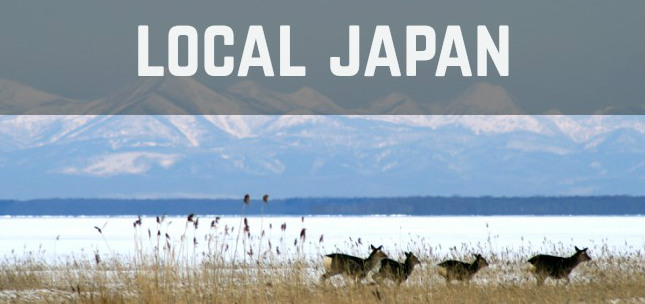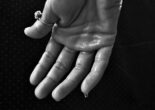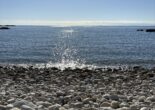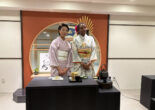
Local Japan: Nemuro – The Easternmost City in Japan
I moved to Japan the summer of 2015 to be an ALT (assistant language teacher). I had no idea about the place I was moving to except that it was very far north and the easternmost accessible point in Japan. There were about 25 people departing from the same city as me in New Zealand, and I remember well the feeling of shock when we put up a map of Japan with pins indicating our destinations. There just were 3 of us going to Hokkaido, the other two were going to Otaru on the opposite side of the wide island. We attended some workshops with some young Japanese volunteers who helped us write self-introductions in Japanese and talk to us about Japan. The woman I was paired with remarked that I was going to “the end of the earth”.
However, these perspectives came from those who have never been to Hokkaido, since arriving here my worldview has changed a lot. Geographically, when someone mentions me living in the north, I tend to think “that would be Wakkanai, Nemuro is east of course”, before realising they meant the north of Japan, not of Hokkaido itself. It doesn’t feel so far anymore.
The first day I came to Nemuro was an unusually hot day in Hokkaido. The person who came to pick me up fell asleep on the train, and I spent the last two hours watching out through the open window of the small Kushiro to Nemuro train, letting the hot summer wind hit my face. I watched as we passed what felt like endless stops of small empty stations surrounded by large fuki leaves (they look like umbrellas and are a relative of rhubarb). When we finally arrived in Nemuro it was around 10pm and it started raining heavily. I was ushered to a 7-11 where I picked out some food in a daze, and then dropped at my house to sleep. My house is big compared to what I was used to, with a lounge, bedroom and study. But the kitchen is very small. It is cold in winter, and the temperature usually matches that of outside before I turn the heater on. I was advised to turn my water off and drain the pipes if I go away overnight in winter, but they managed to freeze while I was at work more than once, resulting in floods from the burst faucet. So now I drain the water in the day if the temperature threatens -10c or less.
My house is on the edge of one of the school grounds, by the parking lot. This means that everyone knows where I live. This isn’t so bad, and has some advantages too. When I first arrived people came to introduce themselves and invite me for dinner, bringing gifts of cakes and fruit. It is within walking/biking distance of 2 supermarkets, and once I got a car I discovered 2 more. There are a few clothes shops in Nemuro, and a nice stationery store. There are good restaurants, but no movie theatre, and few fast food places (MOS-Burger, 10.4 pizza, Sukiya and a couple more).
Being vegetarian I can’t say a lot about Nemuro’s two seafood specialities, Hanasaki Crab and Sanma Fish (Saury) which both have their own food festivals on the 1st and 3rd weekends of September every year. However, I can tell you about my favourite restaurant in Nemuro; Hanamaru Kaiten Sushi. I’m a vegetarian so I don’t eat fish at all, but I love bringing my friends here. The atmosphere is really nice, and I love ordering all the veggie sushi and lots of imo-dango (it’s incredible! Crunchy on the outside and soft inside with a delicious sauce). Sometimes they put out special one-off veggie sushi too. There’s often a line to wait but my friends rave about the non-veggie sushi too, so everyone’s happy.
Cape Nossapu is where you can stand on the easternmost point in Hokkaido. It has been extremely windy most times I’ve been there. On a clear day you can see the northern territories of Japan, the Habomai and Kuril Islands. I’ve seen seals hanging out on the rocks around here, and others have said they’ve seen sea otters too. I went there once to see the sunrise, although it was quite cloudy that day (to be honest it is cloudy most days in Nemuro), it was an interesting feeling to understand that I was seeing the sun that day before anyone else in Japan. My best experience visiting Cape Nossapu was this winter when the drift ice made its way all the way out there. On one side of the Nemuro Peninsula is the Pacific Ocean, a salty ocean stretching all the way to my home in New Zealand. On the other side is the Okhotsk Sea, which is less salty than the Pacific, and this is where the drift ice drifts in from. That day at Nossapu was totally surreal. It was sunset, and it was a rare occasion with no wind. The skies in winter in Nemuro are much clearer than those in summer, and you could see the northern territories as well as the mountains of Shiretoko Peninsula easily. The sea was no longer sea, it was white with huge pieces of ice. And it was silent. Usually at Nossapu the wind and ocean sounds are slightly overwhelming. The calm cold silence was made even eerier by the creaking and popping of the ice as it gently moved in the ocean. The movement was slight, but if you watched intently you could see that the currents were pushing the ice around. As the sun set the ice lit up with pinks and oranges. It was one of the most beautiful things I had ever seen.
If you travel by car in a circle around the peninsula you will pass Hoppo Gensei Kaen. Called “Northern Garden” in English, this is a place which doesn’t stand out from the road. Although I knew it was there, the first time I felt an urge to stop was on my way back from watching the sunrise at Cape Nossapu. I’d spent a lot of time wandering around the cape so it was close to 8am by the time I passed the Northern Garden and saw a herd of small horses gathered around the gate. Exactly when I stopped a small truck pulled up and a woman got out, went into the garden and scattered a bucket of food along the wooden walking platform. As she left she told me to go in and see them, so I went in and met the horses as they climbed all over the platform eating the food. They were so friendly, there were some young ones too which enjoyed rolling in the grass. The second time I went there they were out in the fields. I climbed down off the wooden walking platform and called out to them, and to my surprise they came over to greet me. Of course they wanted food and I didn’t have any so they lost interest after a while. The third time I met them was on a hot summer’s day. The flowers were finally in bloom and the horses were lazily napping in the grass.
Kuruma Ishi is one of my favourite places to go in Nemuro. Part of the reason I love it is because I had such a hard time getting there the first time. Easily accessible by car – but in the first few months here neither I nor my friend here had a car, so we took our mama-chari bikes on a journey. Nemuro has no mountains, but I wouldn’t say it is flat, and we nearly killed ourselves biking through the empty hills. We actually went the wrong way, and ended up beside the cliffs of Kuruma Ishi, at Hanasaki Port. We could see where we were supposed to be, up on the top of the cliff, but couldn’t get there. We ditched our bikes and hiked up the steps through a shrine. At the top of the shrine we were surprised to pop out into a small out of season Santa’s village. Exhausted, we continued walking down the road until we were at the end. There were paths leading around the cliff, one of which led us down to the ocean again. We still hadn’t seen “Kuruma Ishi”, which we only knew of as the car-stone. We turned around to go back up and there it was, at the top of the cliff, only visible from where we were now standing below. More like a fan than a car or wheel in my opinion, the natural rock formation was quite magnificent. My friend, an awesomely assertive woman from Moscow, didn’t really agree that the journey was worth it, and said “is that it!! Seriously!!?” Most people probably don’t bike 2 hours on a mama-chari to get there but I thought it was pretty worth it.
The next thing I love about Kuruma-Ishi I didn’t discover it until another visit later on. If you follow one of the cliff paths to the end of the wooden platform it abruptly ends while the cliff continues on. It seemed like a lot of people ignored this and carried on to the true end of the cliff anyway, so I followed the tracks a little bit further to see the view. There is a small alcove just around the corner where I like to sit and hide from the wind. From here I’ve been able to watch seals and sea otters playing in the water and resting on the rocks. I’ve also met birdwatchers stalking out the same spot.
Along the same coast is Ochiishi, which has the most beautiful cliff views of all. I always see herds of deer around here in winter. Ochiishi has a small town. Mostly fishermen live here, and on the right day you can see all the konbu kelp laid out on gravel sections to dry in the sun. The konbu is metres long so it’s quite impressive. A couple of months ago I took a small boat tour from Ochiishi, in the hopes of seeing a Tufted Puffin. Called Etopirika in Japanese, Ochiishi is the only place in Japan that tufted puffins come. They nest in the summer in the cliffs of Ochiishi, the sea fog provides them great coverage. On the tour we saw many other sea birds, it was right around the time when we saw the seal colonies and sea otters that I started to feel really sea-sick, and then finally there was a puffin sitting in the water. It dived, caught 3 small fish and then flew up into the cliffs again. I was ill but very happy.
My first week in Nemuro I saw Japanese cranes in a field and instantly fell in love with the nature here. But it wasn’t until winter that the place that really holds a lot of magic in my heart stood out. Lake Furen, on the opposite side of the peninsula from Ochiishi. Every year, Steller’s Sea Eagles and White-Tailed Sea Eagles flock to Nemuro in winter, and with them flock the bird-watchers. So Nemuro made the annual “Bird Land Festival” including a number of bird watching tours. A friend of mine, a woman who runs an English conversation meeting in the city, does ice-fishing in winter with her husband. On one of the bird watching tours she shows the process of placing huge nets under the ice, and the relationship of the fishermen with the eagles. Of course a net does not choose which fish run into it, so some which aren’t useful to the fisherman are left of the ice for the birds to scavenge. During our tour, the eagles perched in the trees watching as we were shown the fish. As soon as we had moved away, they circled and dove along with crows and kites. Although the eagles are impressive with their black and white wings and yellow beaks, my favourite bird is the kite for the silent and graceful way they fly through the sky… just like a kite. After witnessing their feeding, I looked out and saw clearly the mountains of Shiretoko. From my position as I stood on the frozen lake, it didn’t seem like there was any ocean at all between. At that moment a herd of deer travelled in a single line across the white ice. It was truly amazing.
Nemuro’s Konpira Matsuri is one of the 3 largest festivals in Hokkaido. It is held every year on the 9th, 10th and 11th of August. The festival is three solid days and nights of noise, music, parades, festival floats, and dancing. Recently I met an American university student who had picked “the most inaka (rural) place he could find” to write about for a paper. Although I don’t think Nemuro is too rural with about 26000 people living here, I thought back to when I was told I was going to “the end of the earth”, and admired his idea. When he travelled to Japan he came to see this place on instinct, not expecting a lot. He enjoyed it so much, he came back to Japan again specifically to join in the shrine festival a few months later. I totally understand that feeling, Nemuro really surprises you. Together we helped with one of the four festival team’s children’s mikoshi (portable shrine). For three days we dressed in costumes and assisted the children of District One as they escorted the mikoshi. The children didn’t parade at night, so after they finished we were able to watch as the four districts battled each other atop their floats with music, drumming and shouting.
Growing up my experiences of snow had been rare. I had been to the mountains to go skiing once when I was 8 years old. In Wellington it had snowed once or twice in my life. The time I remember well was when I was in university. Most people didn’t come to class, so we went home early. We had a snowball fight, attempted to make a snowman, and then sat around drinking hot-chocolate to warm up. The snow that day was a light sprinkling compared to what I would experience in Nemuro. The first time I saw snow I was on a bus with my workmates, my jaw dropped at the size of the snowflakes, I spent the rest of the ride staring out the window in awe. Over time things started to freeze. I checked the puddles of water outside my house daily with my foot, they would melt and refreeze at night at first. Then later they became solid and stayed the whole day. The first major snow storm, I had to stay home because the schools I was teaching at were cancelled. I went outside frequently throughout the day though, shovelling snow (which I would then have to shovel again later anyway), making footprints, taking photos and planning the best spot for the snowman I would build after the wind died down. Nemuro has one of the largest populations of wild deer, and after fresh snowfall I would wake up in the morning and enjoy following the deer, fox, and bird footprints outside my house.
This year after winter I was feeling quite lazy. I wanted something to do. I’d seen some of my students playing taiko at a small festival back in the summer and fell in love with the idea of it. After some investigation, the same woman who runs the weekly English conversation meeting introduced me to the members of Nemuro-Daiko. They let me visit and try out taiko drumming for one day. It was so invigorating. One time led to another time and next thing I knew I had joined the group and was practicing for my taiko debut that summer at the port festival. They were incredibly patient with me, my Japanese is not the best, but it was better than their English. The members have so much energy and such kind hearts. I practiced once or twice a week for about 5 months before the port festival. It was so incredible to play wearing our costumes, drums lined up on the road with big spotlights on us. We have lots of festivals and events lined up to play in the coming months. As well as being incredibly happy to learn something new and be able to perform, I am so grateful for them to let me be a part of their community. Nemuro-Daiko, and the English conversation group called EPAL are my friends and community here. EPAL are perhaps more like my family, they took me in, they teach me about Nemuro, help me with all my questions, even booking appointments for me and accompanying me to things (like my first taiko practice) when I need support.
Hokkaido can be a bit difficult to get around. You have to come with a lot of patience and time, and ready to relax into the atmosphere of the spacious northern island. I think most people come either to Sapporo or a mountain resort area like Niseko, believing that will give them an experience of Hokkaido. I really encourage you to get in a car or on the JR line, or even a plane to the nearby Nakashibetsu airport, whichever suits, and take yourself out to a place like Nemuro.
Related Articles
Warning: Undefined array key "sfsi_threadsIcon_order" in /home/veremosglobal/tokyoroomfinder.com/public_html/blog/wp-content/plugins/ultimate-social-media-icons/libs/controllers/sfsi_frontpopUp.php on line 165
Warning: Undefined array key "sfsi_blueskyIcon_order" in /home/veremosglobal/tokyoroomfinder.com/public_html/blog/wp-content/plugins/ultimate-social-media-icons/libs/controllers/sfsi_frontpopUp.php on line 170
Warning: Undefined array key "sfsi_bluesky_display" in /home/veremosglobal/tokyoroomfinder.com/public_html/blog/wp-content/plugins/ultimate-social-media-icons/libs/controllers/sfsi_frontpopUp.php on line 266



